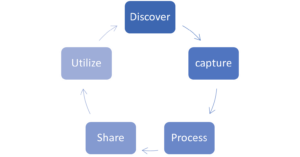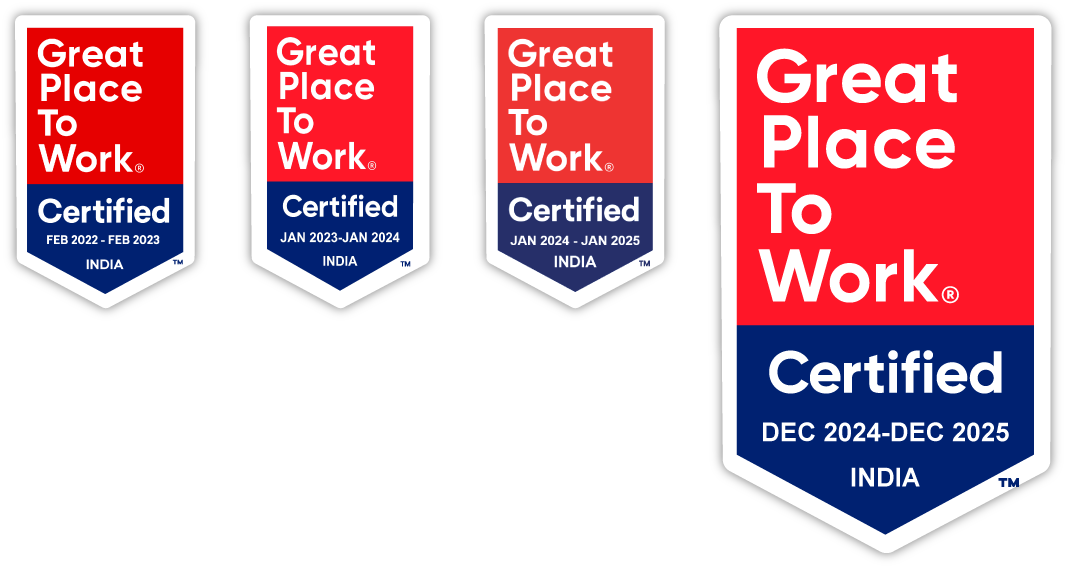An essential part of software implementation is ensuring the warranty by providing, maintenance and support for users to use it easily. Continuous Support and Maintenance service is the combination of processes designed to ensure the operational efficiency of a service provided, including incident management, change management, release management, configuration management, environment management, and business continuity.
1. Continuous monitoring and reduced downtime:
24/7 support:
24/7 customer support means customers can get help and find solutions to their queries in real-time within their local time zones. Users can reach out to this service via a call to the helpdesk by ticket management system (TMS) or via mail.
SLA time – Response and Resolution:
A service-level agreement (SLA) is an agreement between a service provider and a customer, which covers the aspects of quality and availability of service along with the responsibilities agreed between the service provider and the service user.
A CAPA (Corrective And Preventive Action) will be taken forward in case of any SLA breach.
Type of SLA
- Response SLA: It is the time a service provider takes to acknowledge and respond to an inquiry or request from the client.
- Resolution SLA: The time to resolve the incident or query raised.
User Feedback:
Customer Feedback is the factor that determines the success of Continuous Support and Maintenance service. The collection of feedback from the customer should be periodic or whenever it is provided to avoid the sudden surprise of negative feedback. Any type of customer feedback, like an appreciation, a query, a request, or a problem, should be promptly acknowledged, encouraged, and addressed. Negative feedback should be solved initially to avoid dissatisfaction or adverse effects.
-
- Appreciation – Positive feedback expresses that the customer is happy with the service.
- Undertone – A short, initial sign of customer dissatisfaction, which will be communicated by mail or meeting. This should be appropriately observed and addressed to avoid further complications.
- Concern – An expression of worry or anxiety about the service.
- Complaint – An expression of the customer where the business does not deliver on its commitment and does not meet the customer’s expectations.
- Escalation – The highest emotion of customer dissatisfaction, which can result in the termination of the project.
2. Environment monitoring:
- Environment monitoring is the monitoring of key performance metrics and notifies other alerts. Proactive event detection and notification in environment monitoring reduces business risk and maximizes uptime with automated monitoring.
- Environment monitoring should be done in a timely and actionable manner to ensure hassle-free support to the customer.
- Notification to appropriate customer stakeholders provided for events based on criticality.
Performance monitoring:
- Performance monitoring is the process of keeping a close eye on the system when we roll out a new feature or make configuration changes.
- This helps in reducing the risks of downtime.
Smoke testing:
The process determines the build stability of the deployed software. Smoke testing is the confirmation for the QA team to proceed with further software testing. It consists of a minimal set of tests run on each build to test software functionalities.
Smoke testing is performed after Sanity testing and before functional testing.
3. Knowledge management:
Knowledge base maintenance is the process of creating, organizing, and sharing the collective knowledge gained in the project. Successful Knowledge base maintenance includes maintaining information in a place that is easy to access.
Discover:
- During the discovery process, the team must identify all available sources of knowledge, emphasizing information that could be easily lost but could be a potential reference.
- This process is simplified by a strong understanding of where and how knowledge flows around the organization.
Capture:
- Capturing all available knowledge and data creates the foundation for future processes.
- A sloppy or incorrect knowledge collection leads to decisions without a complete understanding of the organization and its capabilities.
Process:
- This phase involves deeply analyzing the knowledge gathered in the previous two steps. Data must be assessed and organized into a structured, searchable, and easily accessible form.
- Assessment of the gathered knowledge is required to ensure it is accurate, offers value, and is current.
Sharing:
- The whole point of knowledge management is to give expert knowledge to staff and the information they need to do their job to the best of their ability; therefore, publishing the knowledge base is vital.
- Once a detailed and accurate body of knowledge is built, it should be shared so that it is available to people at the time of requirement.
Regular KB updates for recurring issues:
- Updating the KB is equally vital to the creation of the documents.
- Any recurring issue should be marked documented and easily available for reference.
- Minor issues and resolutions also should be documented as, at times, they could cause the downtime of the system.
4. Regulatory compliance
Sticking to the customer’s regulatory compliance is the primary key to providing quality, continuous support and maintenance service. Analyzing customer’s processes and changes and making custom modifications in the software to adhere to the process without compromising the functionality and security of the system. Systems mostly undergo Audit log monitoring, archival instead of data deletion, and data management processes to regulate the customer data.
5. Risk assessment and recovery plans:
Regular data backups:
Backup is mandatory where data means more.
Advantages of regular Data backups:
- Prevents Data loss
- Minimize downtimes
- Increased Data Security
- Makes Auditing easy
- Improve compliance
- Archives the completed studies
- Defend against cyberattacks
- Makes recovery comfortable
- Increased reliability
- Simplifies the data management
- Build customer trust
- Facilitation of disaster recovery
Business continuity plans (BCP)
The business continuity process identifies potential threats and the impacts of those threats, if realized, might cause to business operations, and provides a workflow and resilience of the organization with the capability for an effective response that protects the interested party requirements and helps to achieve the objectives of the business continuity program.
BCP is to ensure the operations of prioritized products and/or services are in line with the minimum business continuity objectives during an adverse situation, thereby reducing the impact on customer relationships and ensuring compliance to applicable legal, regulatory, and contractual requirements with agreed levels of confidentiality, integrity, and availability of Information during a disaster.
BCP should be reviewed once in 6 months and updated on significant changes.
The business continuity program has the following phases:
- Identification – The phase involves risk assessment for a mitigation plan.
- Analyze – The phase in which the business impact analysis (BIA) and the consequences of disruption are predicted, and the information needed to design the recovery strategies is gathered.
- Design – The phase that identifies and selects appropriate solutions to determine how continuity can be achieved in the event of an incident. The analysis stage identifies the business continuity requirements, and the design stage determines the best solutions that should be implemented to achieve these requirements.
- Implementation – The phase that implements the solutions agreed in the design stage. Implementation is achieved by developing business continuity plans to meet the organization’s agreed business continuity requirements and solutions identified in the analysis and design stage. The aim is to identify and document the priorities, procedures, responsibilities, and resources that will support in managing a disruption. This should achieve continuity of the prioritized activities and ensure recovery of disrupted activities to a pre-defined level of service within the fixed duration.
- Validation – This phase checks if the business continuity process meets its objectives and if the plans and procedures in place are effective. The purpose of validation is to ensure that the business continuity solutions and response structure reflect the organization’s size, complexity, and type and that the plans are current, accurate, effective, and complete. This helps to improve the overall level of organizational resilience continually.
Customer engagement:
Communication is a vital part of Continuous Support and Maintenance services. Insufficient communication can lead to loss of trust, dissatisfaction, and customer loyalty. Collaborate with internal team and customer frequently for successful Continuous Support and Maintenance services.
Steps to engage clients successfully for long-term:
- Attending and understanding the customers when they are in need.
- Provide effective solutions.
- Record the case with responses in the knowledge base for future reference.
- Ensure the smooth workflow of customers.
- Communicate clearly.
- Schedule customer meetings every week to discuss the status of the project.
- Discuss with the steering committee monthly.
For Increased Customer Satisfaction:
- Understand and freeze the scope and timeline.
- Listen and set clear expectations of customers.
- Be easy to contact.
- Monitor the customer environment frequently and nurture them.
- Acknowledge and respond quickly.
- Set actionable goals.
- Collaborate with the team for effective problem-solving.
- Implement a feedback loop.
Methodology for Continuous Support and Maintenance Services:
Establish a friendly, easily approachable, well-trained technical team who can respond and attend to the issue as a high priority.
Use a tracking system like Jira or Salesforce to log and maintain the life cycle of tickets.
The team should work on Shift to provide round-the-clock service.
Handing over the tickets to the next shift will be scheduled to carry forward.
The client should be notified about the take-over of the tickets after the rotation of shifts, which will prevent the customer from feeling missed.
If the issue is significant and required, the vendor’s technical team should be contacted on behalf of the client to resolve the issues.
Conclusion
The key intention of continuous support or managed service includes high customer satisfaction levels, positive word-of-mouth reputation, and increased revenue. To execute a successful continuous Support and Maintenance service, each approach should be customer-centric, understand the customer and engage as they expect or when they are in need, which will result in appreciable customer satisfaction.
That’s why you need more than just data. That’s why you need Excelra. Where data means more.



